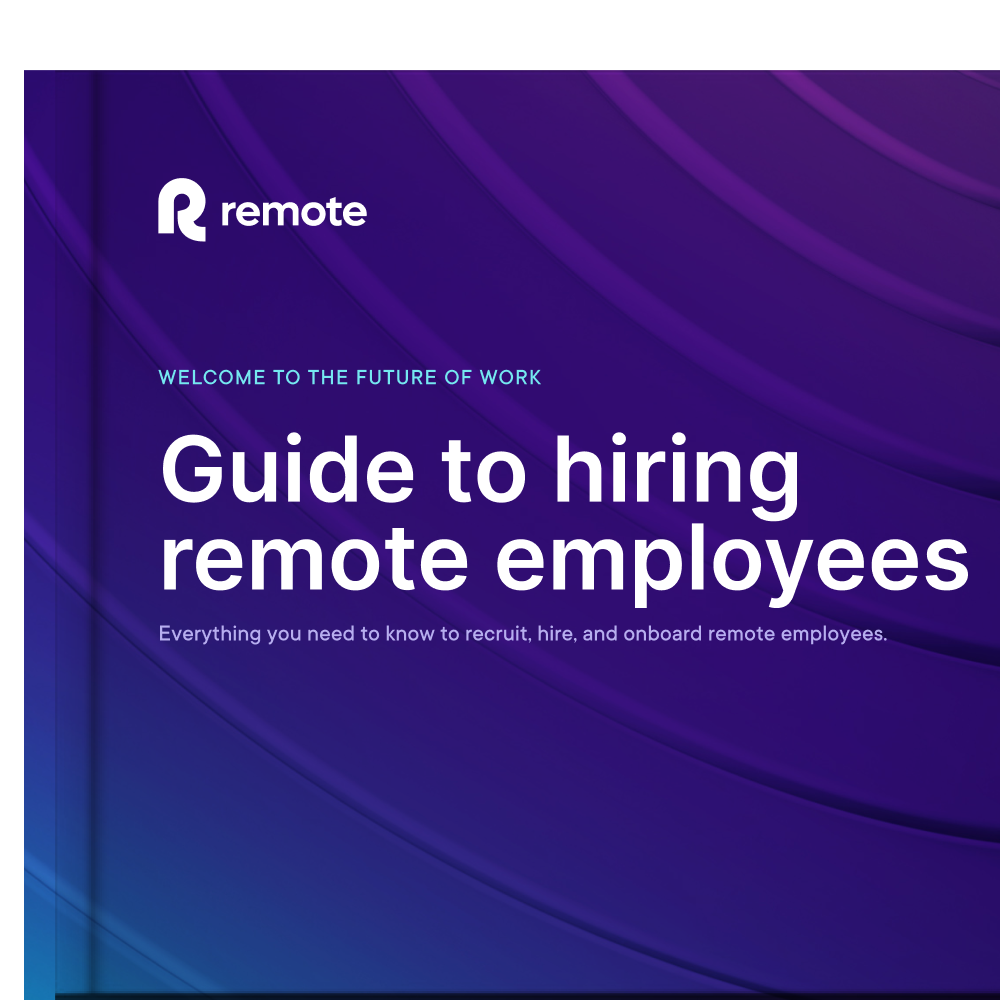
Global HR — 12 min

Employer of Record & PEO — 11 min
When onboarding new employees, most organizations implement a probation period. It gives both parties the chance to ensure the fit is right, and can make it easier to part ways if things are not working out.
But the rules around probation periods vary by country — and they often change, too. If you’re hiring globally, it can be difficult to stay compliant.
In this guide, we’ll explain how to manage probation periods for your global team, and how to minimize the associated compliance risks.
So let’s jump straight in.
Often referred to as an introductory or training period, probation is a contractually-defined phase at the start of an employment. The length of this period can vary depending on the location, industry, and role, although it typically lasts three to six months.
It’s important to understand that, in some countries, probation periods are not required by law. In the US, for instance, probation periods are set at the discretion of the employer, although the terms of the probation must be laid out clearly in the employment agreement.
This isn’t the case in all countries. For example:
In Belgium and Chile, probation periods are not allowed
In Venezuela, probation periods can only last for a maximum of one month
In Estonia, probation periods must last for a minimum of four months
As mentioned, probation terms can also vary by role or industry. Executives in France, for instance, can be required to undergo a probation period of four months, while office workers cannot be asked to undergo more than two.
As a result, it’s crucial to understand the relevant labor laws in your employee’s location.
Despite the differences across borders, the idea behind an employment probation period is generally the same. It acts as a trial period, allowing both you and the employee a chance to confirm that the relationship is a good fit.
It also significantly affects the legal standing of the relationship. During a probation period, there may be more flexibility in terms of terminating the employment agreement, or there may be conditions of the agreement that are only valid once the probation period is completed (such as access to certain employee benefits).
Here are some of the key things to know.
You can dismiss employees during their probation period, usually without cause. However, there may still be limitations and exceptions, even during a probationary period. For example, terminating due to economical reasons or for reasons that violate anti-discrimination laws (or other protected rights) can still lead to legal consequences.
This can often be a gray area, which is why it’s advisable to work with an experienced global HR partner that can advise on these issues. Remote ensures you are aware of — and compliant with — all relevant employment laws and regulations in your employee’s country, mitigating any potential legal issues or wrongful termination suits.
After a probation period, the normal termination laws of your employee’s country apply. Both your and employee’s rights are subject to the terms of the employment agreement and are legally binding.
Generally, you can’t extend a probation period past the stipulated statutory limit unless this is explicitly agreed to by both parties. Rules can differ by country, though.
During the probation period, employee protections depend on the labor laws in their country. Employers cannot take illegal action against an employee during the probation period, such as termination on the basis of race or gender. Employees on probation are also typically covered by safe workplace statutes.
During probation, entitlement to statutory benefits — such as social security contributions, health insurance, vacation, and sick leave — varies by country (and, in the US, even by state).
In some locations, employers may be allowed to offer reduced entitlements during a probation period, while in others, an employee may not be eligible for all benefits.
In the US, for example, the Affordable Care Act (ACA) dictates a maximum 90-day waiting period before an employee is eligible for group health care. Therefore, an employer in the US could choose to set a 90-day probation period, and legally withhold health insurance benefits during this period.
In most cases, employees are entitled to basic benefits such as annual leave right away.
If a probation period is not mandatory in your employee’s country, then you can choose whether or not you want to include one.
Here are some of the things you should consider.
As an employer, there are several benefits to invoking a probation period:
It helps ensure a good fit. Even the most robust hiring process can’t predict how a new hire is going to perform on the job. With a probation period, you can take a closer look at your employee before fully committing.
It provides flexibility. In most countries, it is generally easier to terminate an employee during a probation period. If the employment relationship isn’t working out as hoped, then this can give you some sense of insurance. Also, some organizations require employees to pass product- or role-related training courses before the end of their probation. If an employee fails to meet a conditional requirement such as this, this flexibility can make it easier to part ways.
It structures the onboarding process. The end of a probation period acts as a milestone, allowing you to “work towards” it during an employee’s onboarding. Many organizations set steps to reach this milestone, with the expectation that the employee will be ready to work independently and effectively at the end of the probation. This is particularly useful when hiring for entry-level roles.
It provides a structure for feedback. A probation period offers the employee the opportunity for regular and detailed feedback. This allows them to see what they are doing well and improve where needed.
It helps ensure everyone is happy. A successful working relationship means that both parties should be satisfied. If an employee decides that your organization is not the right fit for them during the probation period, this can save you issues further down the line. It also gives you the opportunity to gain feedback from the employee on why things didn’t work out, and make improvements if necessary.
By the same token, there are also some downsides. Take the following into consideration:
It can increase uncertainty. If an employee opts to leave and there is no notice period per the probation terms, you may end up in a sticky spot in the short term.
It can affect recruitment. Potential hires may view a longer probation period or withheld benefits negatively, which may affect your ability to acquire top talent. These candidates may opt for a position with another company with more job security, or where they feel more “wanted.”
It requires knowledge of local statutes. When you’re hiring abroad, a probation period can, in certain instances, create a compliance risk. To mitigate this risk and minimize complexity, it’s highly advisable to work with a global HR partner like Remote.
If you decide to implement an employee probation period — or you’re obliged to by local labor laws — there’s a few things you need to know.
First, you should understand what exactly the laws are on probation periods in your employee’s location. Time-saving tip: you can get this information quickly and easily in our Country Explorer.
Once you’ve clarified the legal requirements (if any), you should:
Ensure every new employee is assigned a suitable manager. This person should be able and willing to provide feedback throughout the probation period, and be qualified to assess the new starter’s suitability for the role.
Establish clear goals and benchmarks for the employee to reach. These should be split between company-specific goals (i.e., knowing how to make certain requests or understanding certain company policies), and role-specific goals.
Document everything in the employment agreement. Make sure the terms of the probation period are clearly outlined in the employment contract, including termination and notice details, any compensation or benefits to be withheld, and any conditional requirements for passing the probation.
To learn more about incorporating a probation period into your onboarding plan, check out our detailed, specialist guide.
Learn the processes you need to find, recruit, and onboard remote employees (and stay compliant while you're at it).

As mentioned, navigating probation periods for cross-border employees can be a daunting process. You need to understand what local laws are in place, keep abreast of any changes to them, and tailor each employee’s unique probation situation accordingly. You also have to ensure that your probation policy is fair and equitable for all your employees across the globe, despite the difference in laws. This can be a real challenge.
That’s why, for most businesses, it’s advisable to work with a reliable employer of record (EOR) provider, like Remote. For each employee, we automatically provide you with the relevant suggested probation period, and give you clear guidance on best practices to follow.
We also provide country-specific support throughout the process, with a dedicated Onboarding Operations Specialist who can answer any questions you may have.
If you’re transferring employees on probation to an EOR (either from your own entity or another EOR provider), you should:
Review existing contracts, with consideration of termination procedures and notice periods.
Notify your current EOR (if applicable) and follow any contractual notice requirements.
Coordinate with your new EOR to transfer your team members’ records seamlessly. Consider either transferring PTO balances to the new EOR through a specific transfer agreement, or leveraging a seniority clause for continuous employment for those employees who are transferring in.
Openly communicate the changes to your team members (specifically in regards to their employment status and benefits).
Thoroughly document the entire transition, including all communications with your current EOR and team members, to serve as a reference in case of disputes.
Note that Remote can provide legal consultation to confirm compliance with employment laws and contractual obligations such as:
Seniority
Transfer of annual leave balance
Benefits
As well as ensuring your probation policies are accurate and compliant with local legislation, we’ll advise your team to make sure the implementation is managed correctly. And that’s just one of the many ways we can simplify your global HR. We can handle your employee’s payroll in their currency, manage their benefits, and safeguard your intellectual property — all while complying fully with local labor and tax laws and ever-changing regulations.
To learn more about onboarding international employees — and how we can help — check out our detailed introductory guide. Alternatively, if you’re ready to start simplifying your global HR, come and talk with one of our friendly experts today!
Create an account with G2's top-ranked multi-country payroll software and start onboarding your first employees in minutes.

Subscribe to receive the latest
Remote blog posts and updates in your inbox.